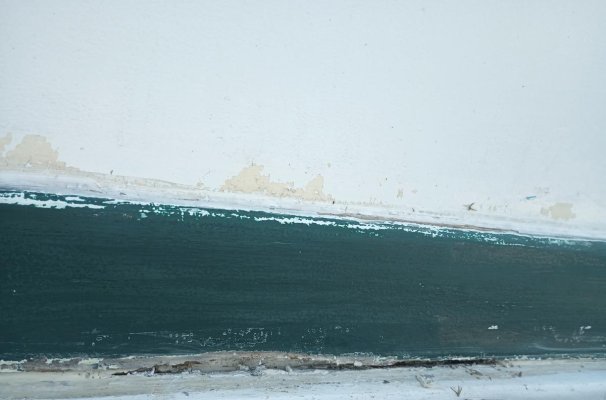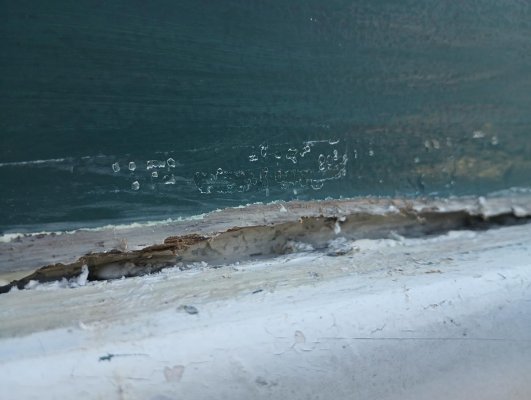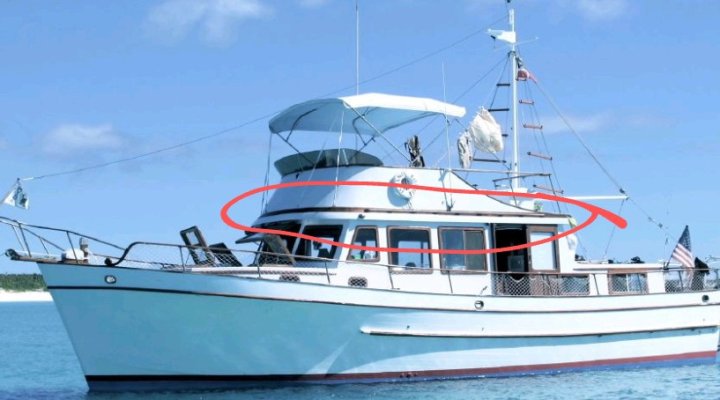Greetings,
Ms. MM. Aaahh....I see now. Thanks for the panorama picture. OK. A couple of things:
It appears your "void" is at the intersection of the vertical side of your fly bridge (green) and the horizontal upper deck (white), the transition being covered by your "trim" piece. It also appears there was a, now non-existant, piece of wood that used to be
in the "void" as evidenced by the remnants in the far left of the pictures.
The trim piece is
most probably only cosmetic meant to hide or pretty-up that vertical to horizontal transition so IMO not
absolutely necessary. The void used to be filled with the now missing/rotted out section of wood and glassed over before the trim was applied at the factory.
Several approaches have been suggested...(Mr. A. Concrete???? I see where you're coming from and your approach does have some merit but NOT in this case IMO) and ALL have been dependent on cleaning out that void as well as possible. Clean, clean, clean. The integrity of the final repair is MOST dependent on eliminating any and all contamination (old caulk, loose wood, loose fiber-glass reinforced plastic (FRP)).
I always try to use the Goldilocks approach on removal of material to gain access to areas to be repaired. Not too much, not too little, just right.
So.....Tool time. What have you got for tools and what is your experience (no time like the present to learn)?
Since it appears to be a smallish area, you
might get by with cleaning it out with a Dremel type tool using burrs. Example ONLY!!!
Then again, you might have to beg, borrow or steal heavier duty equipment.
If you haven't got one already, invest in a half decent wet/dry shop vac. You WILL need it for numerous jobs.
Be patient, go slowly, keep the area dry (rain) and don't hesitate to keep asking questions.
Edit: IF you happen to have ANY silicone products aboard. THROW THEM ASHORE NOW!!!







